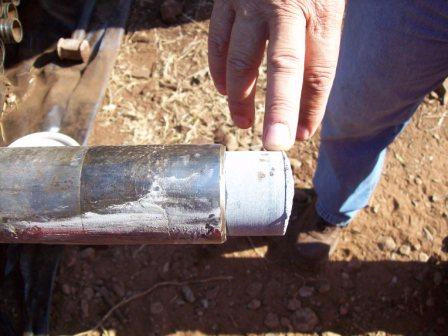How We Get Rock to the Surface
22.06.2008 Drilling allows us to reach rocks that have been beneath the earth’s surface for millions to billions of years.
Main content
Here they have been protected from weathering processes at the earth's surface that destroy the ancient signs of life and environments which we are trying to understand. A carefully designed series of rods and tubes is used to lift cylinders of rock core from deep beneath the ground.
The rotating ring-shaped drill bit at depth produces a solid, cylindrical-shaped rock core that is continuously pushed up and fed into a 3m long inner tube. This in turn fits inside the drill rods and is attached to a wireline system that is lowered down the borehole to retrieve the newly drilled rock core after each 3m run and bring it to the surface. Two inner tubes are used on-site so as not to waste time during the drilling process. One containing the rock core sample is pulled up to the surface by the wireline then an empty inner tube in immediately lowered down the hole to maintain an efficient and continuous drilling operation. On the surface, the rock core is extracted straight out of the inner tube and placed in core boxes carefully labelled with the depth and orientation to ensure that we can fit all the pieces of core back in their original position relative to one and other.
The photo shows a fresh sample of volcanic basalt sticking out of the end of the inner drill tube and was collected during the Barberton Scientific Drilling Project.
